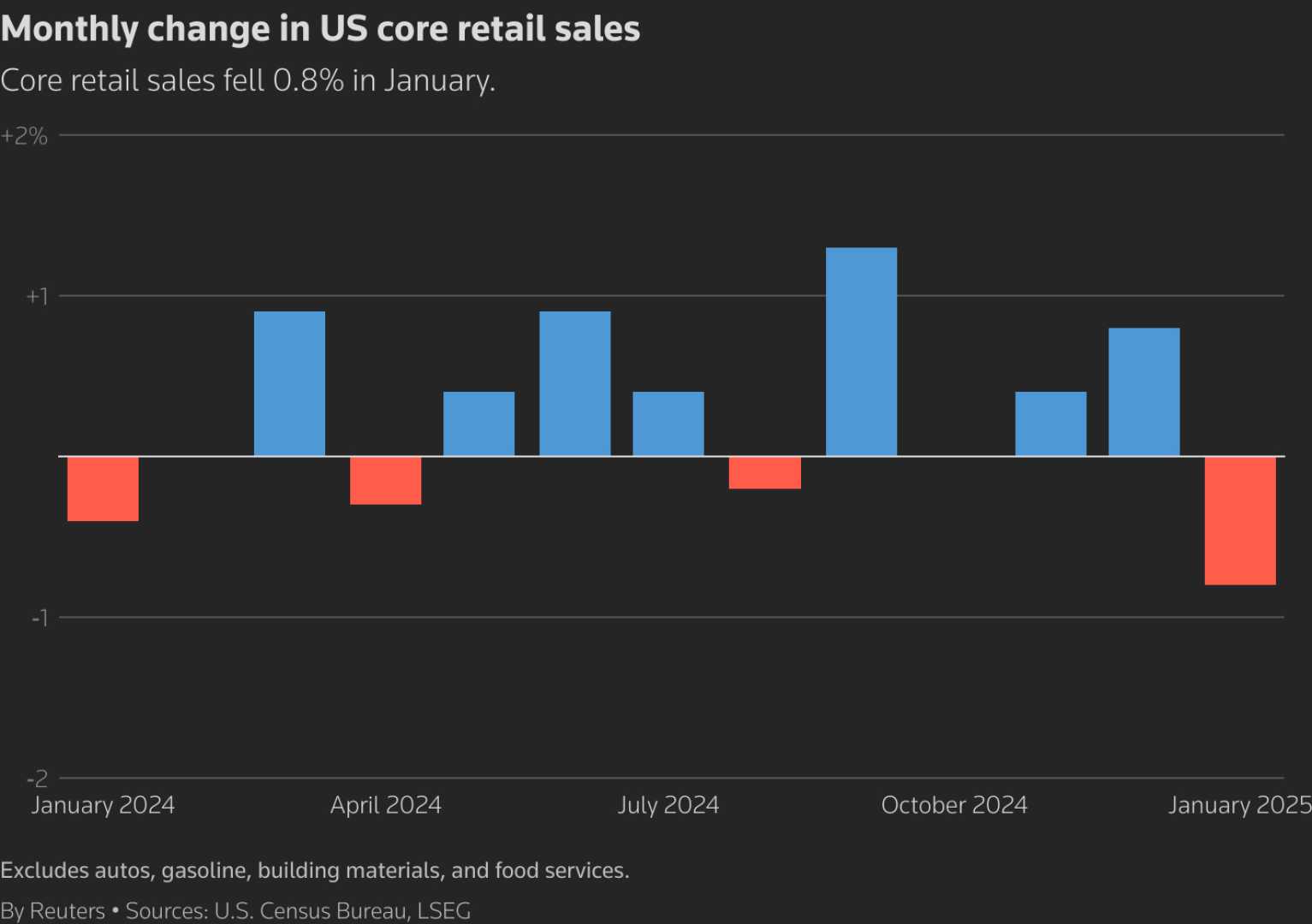Business
Retail Sales Surge Despite Tariff Concerns, Boosting Economic Outlook

WASHINGTON, April 16 (Reuters) – U.S. retail sales climbed by 1.4% in March, reflecting an unexpected surge in consumer spending as households rushed to purchase motor vehicles ahead of newly imposed import tariffs. This data, reported by the Commerce Department’s Census Bureau, comes as fears of economic stagnation loom due to President Donald Trump’s tariffs on vehicles.
The March increase surpassed economists’ forecasts, which predicted a 1.3% rise. February’s sales were revised upward from a 0.2% to a 0.4% increase, demonstrating consistent consumer activity despite economic uncertainties. The year-over-year increase stands at 4.6%, highlighting robust spending behavior.
Excluding automotive sales, overall retail sales rose by 0.4%, down from an earlier estimate of 0.6%. Strong performance in retail is attributed partly to consumers anticipating price hikes due to tariffs, which took effect in early April and include a 25% duty on trucks and cars. Motor vehicle and parts dealers noted a 5.3% rise in sales as consumers rushed to make purchases before prices potentially increase.
“Net, net, these are simply blow out numbers on March retail sales where the rush is on like this is one gigantic clearance sale,” said Chris Rupkey, chief economist at FWDBONDS. “Consumers are expecting sharply higher prices in the next year and are clearing the store shelves while they can.”
In addition to vehicle sales, other sectors experienced growth, such as sporting goods, which saw a 2.4% uptick, and building materials, which increased by 3.3%. Food service and drinking establishments noted a 1.8% rise, while gasoline retailers reported a decline of 2.5% as prices fell during the month.
Nonetheless, not all indicators point toward an optimistic consumer outlook. Consumer sentiment has dipped to near historic lows, driven by inflation concerns and the possibility of a recession stemming from tariff effects. The University of Michigan‘s sentiment survey recently recorded its second-lowest reading ever.
Additional data from Bank of America indicates that discretionary spending, particularly on ‘nice-to-have’ services, has diminished, while necessary expenses like rent, utilities, and insurance have continued to grow.
Concerns about the broader economic landscape have been amplified by layoffs related to the Trump administration’s campaign to downsize federal employment, further affecting consumer morale. With high-income households driving much of the recent spending, any decline in investment portfolios may lead to reduced discretionary spending in the near future.
Looking forward, economists anticipate that while retail sales data appears strong now, slowdowns in the service sector may emerge, potentially curbing consumer spending, which comprises over two-thirds of the U.S. economy. The Atlanta Federal Reserve currently projects that GDP could contract at a rate of 0.3% for the first quarter, taking into account the challenges posed by international trade and tariffs.












